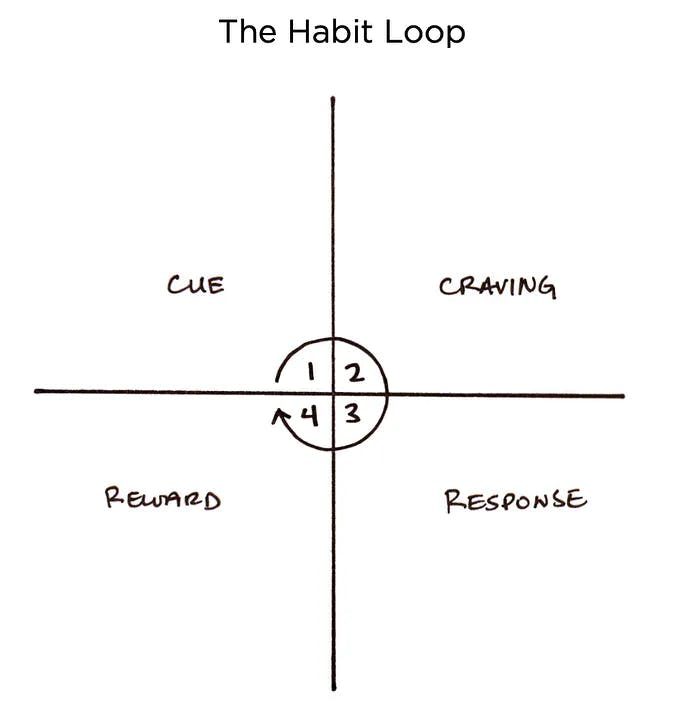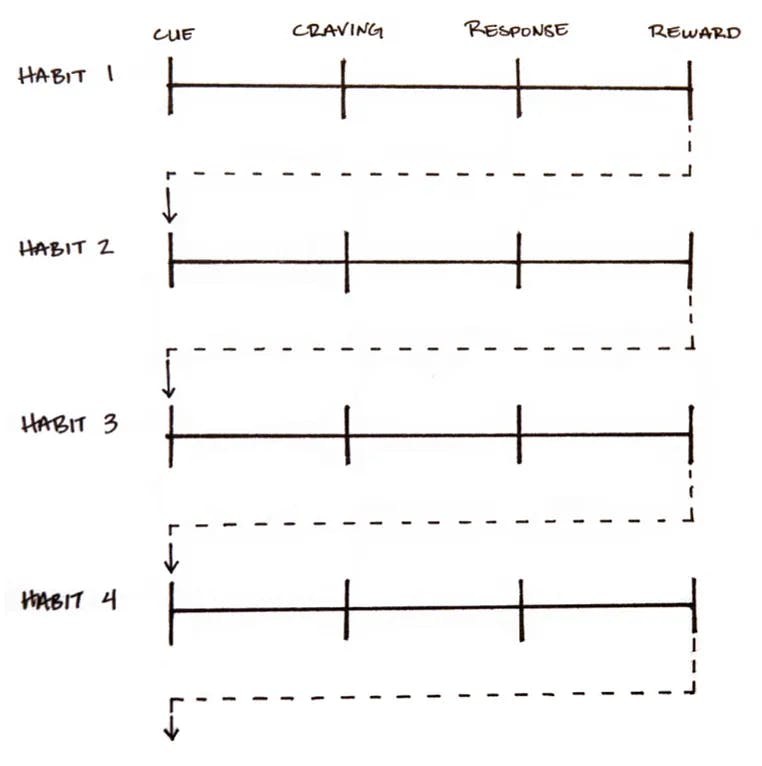Habits determine your entire life, whether you are aware of it or not. A large part of your daily actions happen subconsciously and automatically through learned habits. This also applies to trading.
The Power of Habits
However, many of your habits can stand in the way of your success. That's why I'm showing you today how to break bad trading habits and become a successful trader! Virtually our entire daily life is controlled by automatism that we later acquired and have been executing like a machine ever since - without having to think about it.
Take driving a car, for example:
- When you learned it, you thought about every single step.
- Today, after possibly driving a car for years, you unlock it, sit down, and drive off.
- In extreme cases, you were so lost in thought that you arrived at your destination and couldn't remember some of the way.
We can use this power - properly applied - for trading and benefit from it. The concepts and methods that I will now show you and adapted for trading come from the book "Atomic Habits" by James Clear (original version*; German translation*). The book rightfully belongs to the books that you should definitely have read. Not only in the trading context.
This is the Power of Habits
But before we delve deeper into this, let's briefly explain how habits develop in the first place. In "Atomic Habits", the "habit loop" is discussed. It describes an endless cycle that runs constantly in every moment of your life. This loop scans your environment, predicts what will happen next, tries out different reactions, and learns from the results. Summarized in a few words, the cue triggers a craving that motivates a response that leads to a reward that satisfies the craving and starts over again.

The habit loop visualizes the interplay of the four different stages.
What does this mean for trading?
As I just explained, this loop, these four steps, always and constantly take place. In you, in me, in everyone. We just don't notice it. That means that if we are aware of this, we can use its characteristics to our advantage and use the habit loop in a way that serves us. But what habits do you have? Which of them are good and which are bad? Without knowing that, you can't get any better. That's why we'll move on directly to the next method: The Habit Scorecard.
Habit Scorecard
The scoreboard is a simple method to become more aware of your habits and behaviors. Above all, we can uncover many habits that we don't even have on our radar.

The Habit Scorecard is used to gain an overview of your current habits and to evaluate them objectively.
To get an overview, you should first take a closer look at your current habits and evaluate them. Do your current habits serve you, hinder you, or neither? This simple method is especially suitable for trading to become aware of what you are subconsciously doing. Then you look at the written habits very objectively. And then you ask yourself whether they are helpful for trading or whether they are the reason why you are stuck. The next trick will help you increase the likelihood of maintaining a new habit.
Habit Stacking helps you by building a new habit you want to establish on an old one. This means you choose a habit and connect it with the new habit you want to automate. It is much easier to establish a new habit if you connect it with one that you have already established. This process can be repeated as often as you like to chain numerous habits together. Each one serves as a trigger for the next. But what does that mean in concrete terms? Well, let's say we have already successfully established a habit; let's say we have internalized it so much that we have calculated our take profit and stop loss before entering a trade.
Then this habit forms the basis for a new, good habit that we want to build. Specifically, we can use this syntax for this:
After __________ (current habit), I will __________ (new habit)
Habit Stacking
The next trick will help you increase the likelihood of maintaining a new habit.
Habit Stacking helps you by building a new habit you want to establish on an old one. This means you choose a habit and connect it with the new habit you want to automate. You can establish Habit Stacking using this syntax.

The concept of 'Habit Stacking' is based on stringing a new habit onto an existing one.
Results-Oriented vs. Identity-Based
Let's move on to another concept from the book: results-oriented vs. identity-based habits. With results-oriented habits, the focus is on what you want to achieve. With identity-based habits, the focus is on who you want to become. Which habit do you think is easier to establish? Using this syntax can help you establish Habit Stacking. Are you only interested in the outcome of the habit, or does the habit stem from your deepest inner self, your identity? There can only be one answer to that question when I ask it like that. In fact, it is much easier for us as human beings to establish habits that fit our identity.
It sounds crazy, but it makes a psychological difference whether you say to yourself, "I'm going to run twice a week now to get fit" (outcome) or whether you simply call yourself a runner who runs twice a week because it's simply part of being a runner.
It's the same with trading: Do you call yourself a trader, or do you trade for money?
Of course, you trade for money, but for the trader, earning money is linked to his identity. He focuses less on the money, is therefore more emotionless, and achieves better performance.
Plateau of Latent Potential
Finally, I want to give you this concept: The Plateau of Latent Potential.
Everyone has encountered this concept before, consciously or unconsciously. Every time you invest a lot of time in something, the reward of hard work only shows up much later than you expected. Because success does not pay off linearly, but must be laboriously built up.
We often expect progress to be linear. At least we hope it happens quickly. In reality, the results of our efforts often only become visible with a delay. It is only months or years later that we recognize the true value of the work we have done. This can lead to a "valley of disappointment" in which we feel discouraged after working hard for weeks or months without seeing any results. However, this work was not in vain. It was simply stored and saved. Only much later does the full value of the previous efforts become apparent. This concept describes all efforts and exertions in life. No matter where you are right now or what your plan is. One day, you will have your own experiences with this valley of disappointment. Surely, also in trading.
I don't know how many times I've been in this "valley of disappointment" while trading. I can't even count it anymore. But what I can tell you is that it's just like on this chart. One day, the effort, the hard work, and the work will pay off. You just have to persevere until then and believe in your goal.
We have also produced a YouTube-Video for this blog post. You should watch it now.
*This is either an advertisement or an affiliate link. If you click on this link and make a purchase or complete a transaction, we (depending on the provider) may receive a commission. You will not incur any additional costs and you will support our project. We thank you for your support!